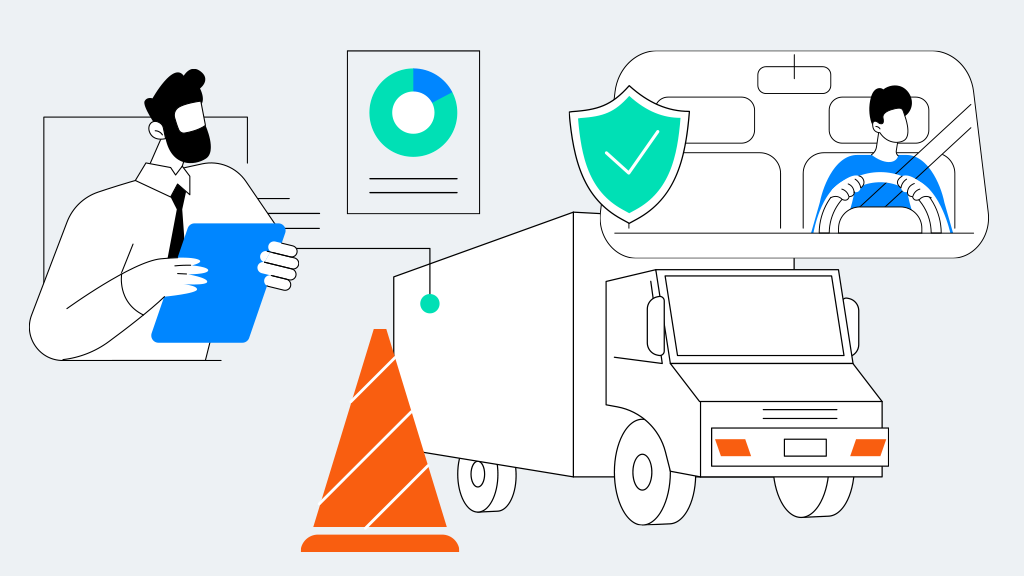What is Fleet Safety?
Fleet Safety is a term for the collective processes, technologies, and other safeguards businesses with large fleets deploy to protect their employees, assets, and equipment. Safety has many benefits for the business, but the primary concern is keeping your operators and assets safe and running at peak performance.
The Benefits of Fleet Safety
Fleet safety offers important benefits to the largest multi-use fleets. The most critical is maintaining a safe and healthy workforce, but other benefits include:
- Incentivize desirable operator habits and behavior
- Increase fleet uptime and productivity
- Reduce insurance costs
- Decrease fuel consumption
- Build practices that increase fleet and jobsite compliance
READ THE GUIDE: Quick-Start Guide to Creating an Integrated Safety Program
Safety Program Components
Safety programs generally consist of several interconnected processes and technologies, with teams of employees dedicated to maintaining and improving them on daily basis. These programs are a collaborative effort between Safety Managers, Fleet Managers, Compliance Managers, and Operations Managers. A robust program spans everything from operator behavior to remote diagnostics. Specifically, common components include:
- Driver behavior monitoring and scorecards
- Operator training processes
- Accident and incident reporting
- Video telematics (dash cams)
- Preventative maintenance management
- Vehicle and jobsite inspections
- Written policy
- Compliance process management
Fleet Safety Manager Job Role
Large multi-use fleets deploy Fleet Safety Managers to oversee and maintain these programs. According to OSHA, the responsibilities of a Fleet Manager typically include:
- Implement general policies and procedures.
- Responsibility for the safety of operators while they are on duty
- Monitor compliance of established program and multiple regulations
- Review accidents and prevent recurrence
- Ensure all vehicles and equipment are safe for the field
- Establish policies and processes for regular inspection of vehicles and equipment
- Develop the company’s driver training program to reduce risk
- Review each preventable accident and unsafe driving report with the employee and supervisor
- Analyze all safety data and reporting from across your fleet
Fleet Compliance
A modern safety program is largely intertwined with compliance management. Several regulatory bodies exist to help ensure safety, including the Department of Transportation (DOT), Federal Motor Carrier Safety Administration (FMCSA), Occupational Health and Safety Administration (OSHA), Mine Safety and Health Administration (MSHA) and other industry-specific regulators. A full program includes planning, monitoring, and ensuring the fleet and operators are following the many mandates handed down by these bodies.
To learn more about how to construct a fleet safety program, speak with an expert today.



![Episode 50 Thumbnail Erin celebrates building the fleet community with 50 episodes and 11K followers on LinkedIn [Podcast]](https://intellishift.com/wp-content/uploads/2020/04/Driver-safety-Image-scaled-1.jpg)



